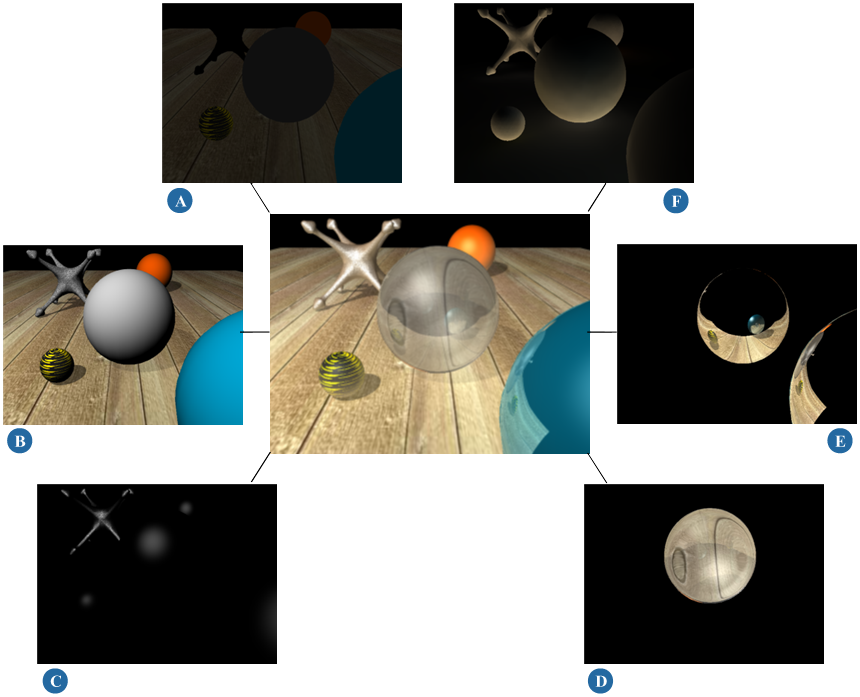Render channels extend the functionality of render passes by allowing you to output multiple images for each of the pass' rendered frames. Each image contains different information about the pass such as reflections, ambient and/or diffuse lighting, irradiance, and so on. You can use these images at the compositing stage, the same way you would use any render pass.

The scene above defines six preset render channels, each extracting specific attributes of the objects' surface materials. Any combination of these channels can be rendered with the pass.
| A |
Ambient Channel |
D |
Refraction Channel |
| B |
Diffuse Channel |
E |
Reflection Channel |
| C |
Specular Channel |
F |
Irradiance Channel |
The advantage of using render channels is that they are easy to define and quick to add to any pass. You do not need to create complex systems of partitions and overrides to extract a particular scene attribute. In effect, render channels allow you to turn a single pass into multiple passes without any sort of complicated setup work.
 Except where otherwise noted, this work is licensed under a Creative Commons Attribution-NonCommercial-ShareAlike 3.0 Unported License
Except where otherwise noted, this work is licensed under a Creative Commons Attribution-NonCommercial-ShareAlike 3.0 Unported License